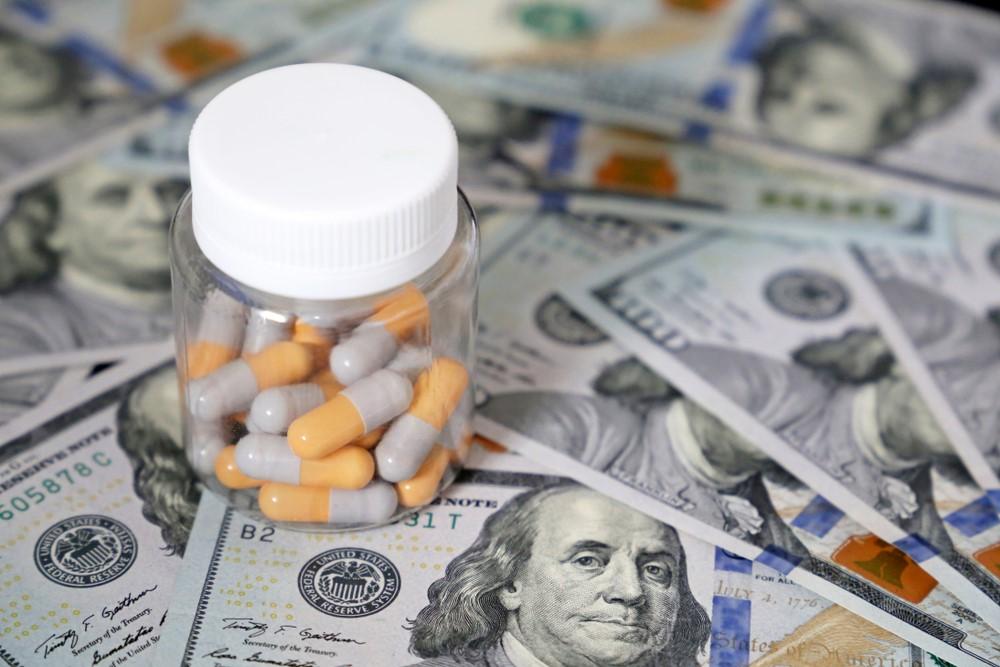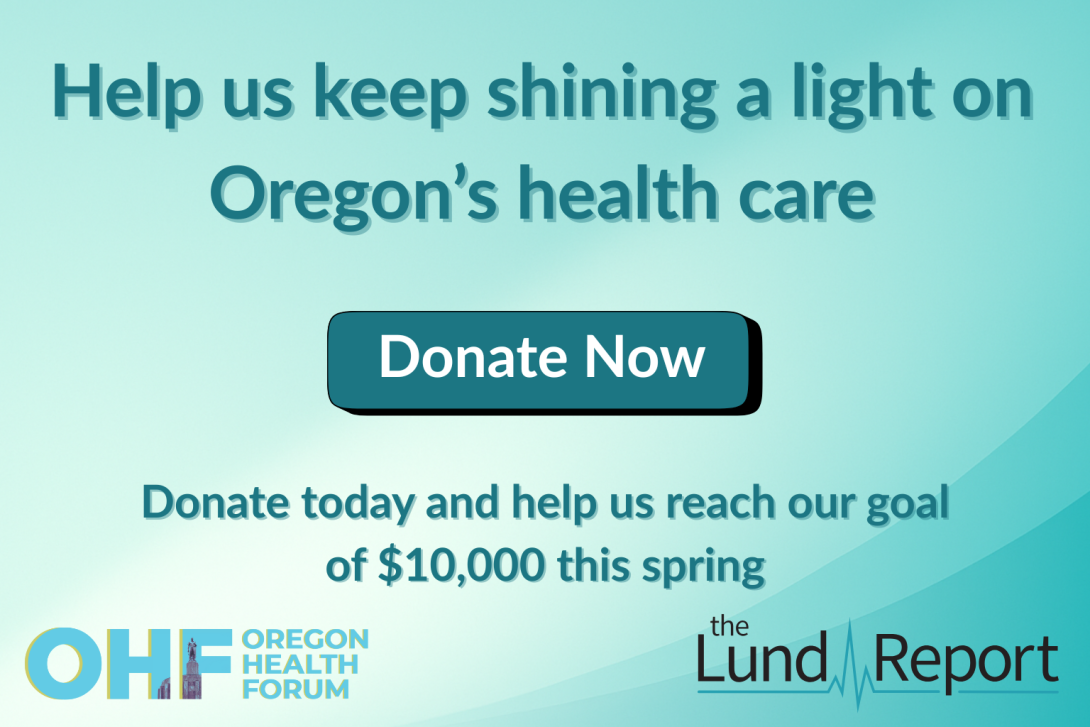
An Oregon program that aims to peel back the opaque layers of prescription drug pricing wrapped up its first year this week with a report to the Legislature that underlines what was already known -- the U.S. pays much more for medications than the rest of the world -- and shows that relentless price hikes are hurting patients.
Oregon’s drug price transparency program collected its first drug price reports from manufacturers this year. The data, which are self-reported, showed that on average manufacturers charge U.S. consumers five times more for drugs than patients in other countries.
“We know anecdotally that the U.S. does pay more for prescription drugs than other countries,” Cassandra Soucy, the program’s manager, told The Lund Report. But she said she was surprised “to see the differences where the U.S. is versus where the other countries are at.”
The program received more than 700 reports on new and existing drugs from manufacturers, which had to provide price increases in the U.S. and elsewhere and explain the reasons for them. Nine insurers submitted data on the costliest drugs, and more than 100 patients, providers and insurance brokers shared drug-price nightmares.
The program is one of three in effect nationwide but it is the most comprehensive, according to experts. Yet so far it’s failed to produce any major new revelations, advocates said.
“If we want to have meaningful results out of this program, we need to be able to see data that we’ve haven’t seen before and from what has been released initially, we’re not at that point,” said Numi Lee Griffith, health care advocate at the nonprofit OSPIRG.
Soucy said the program just got started.
“It’s our first step in trying to understand what’s going on regarding drug pricing,” Soucy said. “We’re going to continue to build upon the information that we have in this first year so that we can get better data and continue to learn more about drug prices and costs.”
The industry’s lobbying group, Pharmaceutical Research and Manufacturers of America, or PhRMA, is paying attention. Last week it filed suit in U.S. District Court in Eugene against the program and a law the Legislature approved last year that requires a 60-day notice of drug price increases above a certain threshold.
“It is our hope that these misguided and unconstitutional policies are put aside so that we can instead focus on reforms that will actually help people better afford their medicines, such as capping out-of-pocket costs, making monthly costs more predictable and sharing negotiated savings on medicines with patients,” PhRMA Executive Vice President James Stansel said in a statement.
The suit angered lawmakers, including Rep. Andrea Salinas, D-Lake Oswego, chairperson of the state House health care committee. Advocates said they were not surprised.
“We are disappointed that they decided to challenge these laws that are designed to provide transparency and to help Oregonians better understand why drug prices are rising,” Soucy said.
State Holds Hearing
Part of the report was based on a hearing at the Capitol in November, which included presentations from the pharmaceutical industry, pharmacy benefit managers who negotiate prices for insurers, an insurance company, patients, health care advocates and analysts.
Everyone agreed that prices were too high. No one took responsibility for the problem.
“This is a dysfunctional system that’s not being addressed,” Charles Erickson, a senior on the coast said during the hearing. “We’re allowing price gouging and nothing is being done about it.”
In many other developed countries, national and regional governments set caps on drug prices and negotiate with pharmaceutical companies to lock in low prices. Because nationalized health systems often control access to the entire market, pharmaceutical companies must lower their prices in order to gain access to those markets. The U.S. has no comparable system, and drug companies are largely free to charge what they please. Patients, insurance companies and governments foot the bill.
Oregon’s drug transparency program requires manufacturers to report on new drugs that cost more than $670 for a month’s worth of treatment and price increases of at least 10 percent a year on drugs that cost at least $100 a month. Insurers have to report on the top 25 costliest and most prescribed drugs and the impact those prices have on premiums.
The reports showed annual price increases of 10 percent to 20 percent between 2017 and 2018. Brand-name drugs, which account for 10 percent of the market, were significantly more expensive than generics. The costliest was Humira, used to treat rheumatoid arthritis, Crohn’s disease and plaque psoriasis. Prescribed to about 6,000 people in Oregon in 2018, it cost insurers and patients in out-of-pocket expenses $220.7 million. That’s nearly $37,000 per person. Enbrel, a similar drug, prescribed to 3,000 people, cost a total of $106.6 million; and Mavyret, used to treat 1,500 people with hepatitis C, cost patients and insurers $46.7 million in 2018.
Manufacturers said high prices grew out of several factors, ranging from rebates and research costs to patient assistant programs and profits.
Drug industry desire for profits is the biggest reason for high prices, Jane Horvath, a prescription drug pricing expert at Maryland-based Horvath Health Policy, said during the November hearing.
“It really has a lot more to do with the market than production and development costs,” Horvath said. “Wall Street is always putting a lot of pressure on the industry.”
The industry continues to deliver. In the first quarter of this year, 12 of the most profitable drug companies reported $29 billion in profits, according to a report by Axios.
Those profits came at the expense of patients, advocates say.
“We don’t think that it’s unreasonable for companies to make some profit, but the degree to which they’re taking advantage of patients who really need drugs to live is simply outrageous, said Griffith of OSPIRG.
The program collected multiple stories of people struggling to buy their medications. Some said they needed to keep working just to stay on their employer’s health insurance.
“I cannot retire until my spouse dies; I cannot afford to,” said one resident, who pays hundreds of dollars a month for nine prescriptions for his wife.
Some complained about the skyrocketing price of prostate and asthma treatments. “Something is wrong with a system that is creating working poor who are at risk of being homeless just to be able to pay for medication,” a patient said. Others decried the cost of insulin, which has increased more than 10-fold in recent years.
“It is common for my patients to spread out their insulin by reducing their doses, to skip doses completely or to not pick up refills because they can’t afford the hundreds of dollars for the life-saving medication,” said one provider. “This is now routine in practice -- a big change from 10 years ago.”
The stories often echoed each other. One theme that emerged was that despite the medical advances in the U.S., prices are undermining the system.
“Prescription drugs do not help if you cannot afford them,” one patient said.
Programs Permit Fines
That change has pushed state legislatures to act. California and Nevada both passed drug transparency laws in 2017. This past October, California released its first report, which showed median drug price increases from 2017 through the first quarter of 2019 were nearly 26 percent while inflation was 2 percent. Nevada, whose program is limited to diabetes drugs, also acted in October, fining manufacturers $17.4 million for ignoring or failing to comply on time with its law.
Oregon’s law, passed as House Bill 4005 in 2018, gives the state the ability to fine manufacturers if they fail to comply with the program. The Department of Business and Consumer Services has not issued any fines, a spokesman said. The law also shields manufacturers from disclosure under a trade secret provision though the department can release the data anyway if officials deem that publication is in the public interest. So far, the department has received nearly 3,000 trade secret claims among the 710 manufacturer reports.
It has yet to challenge any of the claims.
“We are currently working through the trade secret exemptions,” said Brad Hilliard, a spokesman for the department.
Advocates hope the department will be aggressive.
“There should be a rigorous analysis of whether something is a trade secret because that’s a legally definable thing,” Griffith said. “We shouldn’t just be taking pharma at their word when they make that sort of claim.”
Anger Fuels Congressional Action
Anger against the pharmaceutical industry is growing. A Gallup poll published in September put the industry at the bottom of the heap among 25 sectors rated annually on their popularity. Nearly 60 percent of respondents said they had a negative view of the industry. People liked government more, with 52 percent seeing bureaucracies in a negative light.
Constituent anger has fueled action in Congress. Earlier this year, the U.S. Senate Finance Committee approved the Prescription Drug Price Reduction Act of 2019. That bill, sponsored by Sens. Ron Wyden, D-Ore., and Chuck Grassley, R-Iowa, would cap out-of-pocket drug costs for seniors and penalize drug companies for raising prices faster than inflation, saving taxpayers and seniors more than $110 billion a year.
Then last week, the U.S. House passed along party lines the Lower Drug Costs Now Act of 2019, co-sponsored by dozens of Democrats, including Oregon Rep. Suzanne Bonamici. That bill would give the federal government the ability to negotiate drug prices for Medicare and create an international price index.
The deadline for passing either bill just passed though they could re-emerge in the months again. But they both face opposition from the powerful Senate Majority Leader Mitch McConnell, Republican of Kentucky.
Trish Riley, executive director of the National Academy for State Health Policy, told The Lund Report that she's got her hopes pegged to the states, which were the first to approve children's health insurance programs and ban gag clauses that prevented pharmacists from informing patients about discounts.
“The states are the laboratories of innovation,” Riley said. “That’s the states’ role in many respects.”
Report Recommends Improvements
The report recommended that legislators improve the program in several ways. It said the drug notification law that goes into effect on Jan. 1 should be unified with the drug transparency program so that both use the same price increase threshold to require reporting. It also called for drug manufacturers to register with the state and report on patient assistance programs for new drugs. It said the list of insurers should be expanded beyond those that offer individual or small group plans and that insurers be required to report on the number and cost of claims.
The program also wants more consumers to share their stories by emailing [email protected] or calling 503-947-7200 or 833-210-4560 (toll-free).
“We will really look at what we get over the next couple of years to see if there’s anything we can learn from (the program) and the impact that it’s having,” said Soucy.
You can reach Lynne Terry at [email protected].
